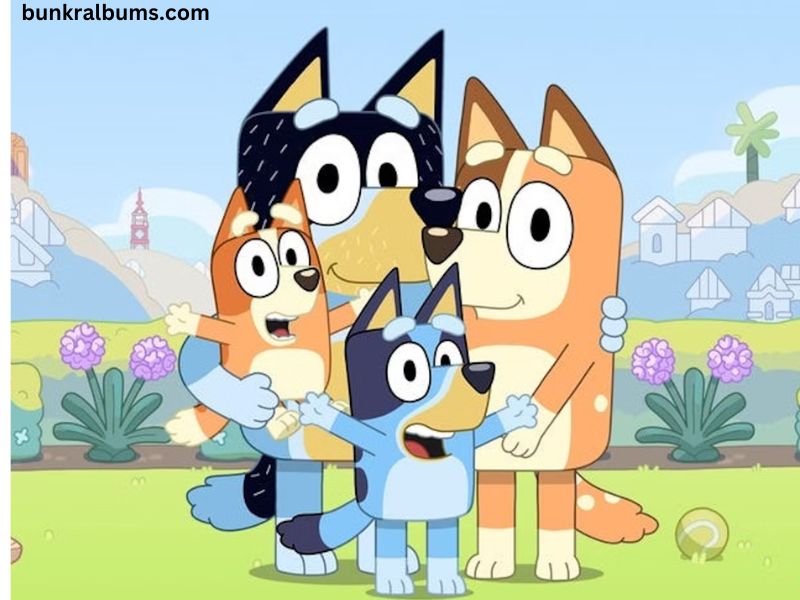“Bluey” is a beloved animated series from Australia that has captivated audiences around the world with its charming storytelling and relatable characters. One question that often arises among parents and fans is: Is Bluey a boy or a girl? This inquiry opens up a broader discussion about gender representation in children’s media and the significance of Bluey as a character.
Who is Bluey?
Before diving into Bluey’s gender, it’s essential to understand who Bluey is. Bluey is a six-year-old Blue Heeler puppy who lives with her family in Brisbane, Australia. The show follows Bluey, her younger sister Bingo, and their parents, Bandit and Chilli, as they embark on imaginative adventures and learn valuable life lessons along the way. The series has been praised for its realistic portrayal of family life, emphasizing creativity, play, and emotional intelligence.
Bluey’s Gender
To answer the initial question: Bluey is a girl. The creators of the show, Joe Brumm and his team at Ludo Studio, designed Bluey as a female character. This decision reflects a conscious effort to present diverse narratives within children’s programming. By having a strong female protagonist, the show challenges traditional gender stereotypes and offers relatable experiences for both girls and boys.
The Importance of Representation
The representation of gender in children’s media is crucial for several reasons. First, it helps young viewers understand that both boys and girls can engage in a wide range of activities. Bluey often takes the lead in imaginative play, displaying traits such as curiosity, bravery, and empathy—qualities that are not restricted to one gender. This representation allows children to see that everyone, regardless of gender, can express themselves and explore their interests freely.
Breaking Gender Stereotypes
“Bluey” actively breaks down stereotypes by portraying characters that embody various traits typically associated with different genders. For instance, Bluey’s dad, Bandit, is an affectionate and involved parent who often participates in playtime and nurtures his daughters. Conversely, the character of Chilli, Bluey’s mom, balances work and family life while being playful and adventurous. This representation helps dismantle the notion that caregiving is solely a female role or that men cannot be nurturing.
Emotional Intelligence
Another significant aspect of Bluey’s character is her emotional intelligence. The show often depicts Bluey navigating complex feelings and social dynamics, teaching young viewers the importance of empathy, communication, and understanding. This focus on emotional growth is particularly important for both genders, as it encourages children to express their feelings openly and learn to empathize with others.
The Role of Imagination in Childhood
Imagination plays a central role in “Bluey,” and Bluey’s adventures often revolve around creative play. This imaginative aspect is not only entertaining but also vital for cognitive development in children. Through play, children learn to problem-solve, negotiate, and communicate—all essential skills for their growth.
Bluey’s gender does not limit the type of imaginative play she engages in. From playing “Mums and Dads” to embarking on grand adventures as superheroes, Bluey showcases that girls can enjoy all types of play. This flexibility in character allows children of all genders to relate to Bluey’s experiences, fostering inclusivity.
The Impact of “Bluey” on Young Viewers
The show’s universal themes resonate with both children and adults, making it a favorite among families. By addressing topics like friendship, family dynamics, and emotional challenges, “Bluey” serves as a tool for parents to initiate discussions with their children about feelings and relationships.
Parent-Child Interaction
One of the standout features of “Bluey” is how it encourages parent-child interaction. The show often highlights playful, bonding moments between Bluey and her parents, which can inspire real-life activities for families. This interaction is beneficial for children’s emotional well-being and can strengthen familial bonds, regardless of gender.
Broader Implications for Gender in Media
The success of “Bluey” has broader implications for how gender is portrayed in children’s media. It demonstrates that audiences are receptive to narratives featuring strong, multifaceted female characters. The popularity of Bluey as a role model challenges the notion that children’s media must conform to traditional gender norms.
A Shift in Storytelling
As “Bluey” continues to gain acclaim, it signals a shift in storytelling within the realm of children’s programming. More creators are recognizing the importance of diverse representation and are striving to create content that reflects a variety of experiences. This shift can encourage young viewers to embrace their uniqueness and appreciate the differences in others.
Encouraging Critical Thinking
By showcasing a range of characters with different personalities and traits, “Bluey” encourages children to think critically about gender roles. As they observe Bluey’s adventures and interactions, young viewers can start to question preconceived notions about what boys and girls “should” do. This critical thinking fosters a more inclusive mindset that can carry into adulthood.
Conclusion
In summary, Bluey is a girl, and her character represents a significant step forward in children’s media. Through her adventures, Bluey embodies the values of creativity, empathy, and emotional intelligence while breaking down traditional gender stereotypes. The impact of her character extends beyond entertainment; it serves as a powerful tool for teaching important life lessons to young viewers.
As children engage with Bluey and her family, they learn that gender does not define their abilities, interests, or the roles they can take on in life. This message is crucial in fostering an inclusive environment where all children can explore their potential without the constraints of societal expectations.
The charm and relatability of “Bluey” have made it a favorite for families around the world, and its influence will likely continue to be felt for generations to come. As viewers celebrate Bluey’s adventures, they are also partaking in a larger conversation about gender representation and the importance of nurturing emotional growth in children.







